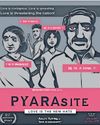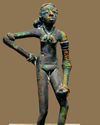
To triumph over competition, athletes must be the fastest, strongest and the nimblest contenders. Recordbreakers must push even further, surpassing the limits of human capability.
But besides their physical prowess, athletes harness a unique set of mental skills that allows them to succeed in their respective disciplines. Numerous studies have shown that athletes' brains differ from nonathletes' brains.
Visual cue processing
The ability to quickly soak up visual information and make decisions accordingly is a crucial skill for athletes, especially those who play team sports. A 2013 study in the journal Scientific Reports revealed that professional ice hockey, soccer and rugby players are better visual learners than people with lowerlevel abilities in the same sports.
The pros were compared with 'elite amateurs'— in this case, US college athletes and players from a European Olympic sport-training centre. They were also compared with non-athlete university students. Compared with both groups, professional athletes performed better, and improved faster, on a task that tested their ability to focus on and track objects moving across a screen. In other words, their brains are more skilled at processing “dynamic visual scenes”, or the world moving around them, the study authors found. The elite amateurs were also better at this than the non-athletes.
This knowledge could be used to enhance an athlete's training and determine the best time for them to return to their sport following an injury, said Jocelyn Faubert, author of the 2013 Scientific Reports study and a professor at the University of Montreal School of Optometry. For example, assessing how efficiently an athlete can process visual information and not make judgment errors could prevent them from coming back too early and putting themselves in danger, he said.
Muscle memory
This story is from the September 08, 2024 edition of THE WEEK India.
Start your 7-day Magzter GOLD free trial to access thousands of curated premium stories, and 9,000+ magazines and newspapers.
Already a subscriber ? Sign In
This story is from the September 08, 2024 edition of THE WEEK India.
Start your 7-day Magzter GOLD free trial to access thousands of curated premium stories, and 9,000+ magazines and newspapers.
Already a subscriber? Sign In

POSTERS OF PROTEST
Appupen is a cartoonist who has published a few graphic novels, the latest being Dream Machine, about how AI can be a great 1 tool for an! authoritarian regime.

CLASH OF THE CIVILISATION
Even as the discovery of the Indus Valley Civilisation completes a century, some key aspects of this ancient culture remain mysterious, including its script. While the controversy over whether it was disrupted by an Aryan invasion may now be discredited, the debate over Indus ancestry and current links continues

A PROVEN PATHWAY TO PEACE
Low-cost, easy to implement, immediate results, and scientifically verified.

FOOTBALL GIVES THEM A KICK
For the children of Manipur and Mizoram, the great game is a way to a prosperous future

BATTLE FOR TOMORROW
Over the past decade, much has been said about India's potential as a leading global power.

THE TONGUE THAT TURNED
Why Greek survived while Latin and Sanskrit declined

USTAD ZAKIR HUSSAIN 1951-2024: HIS MUSIC WAS THERAPY TO THE WORLD
Flautist and Grammy co-winner Rakesh Chaurasia remembers the maestro

The magic of indigo
I really can't imagine why more of us don't throng Goa each December for the Serendipity Arts Festival alone. The festival, in its ninth year now, has the entire Panjim town celebrating.

NEW YEAR.NEW HOPE
EQUITY MARKETS HAVE TURNED VOLATILE OF LATE. WHAT TO EXPECT IN THE NEW YEAR

Seeking middle ground in Middle East
The collapse of assumptions is like the end of the world-or worldview. We assumed conwith the 20th century. But wars in Russia-Ukraine, Gaza, Yemen, Sudan, Somalia and Lebanon prove us wrong. Western defence officials now raise the nuclear threat level.